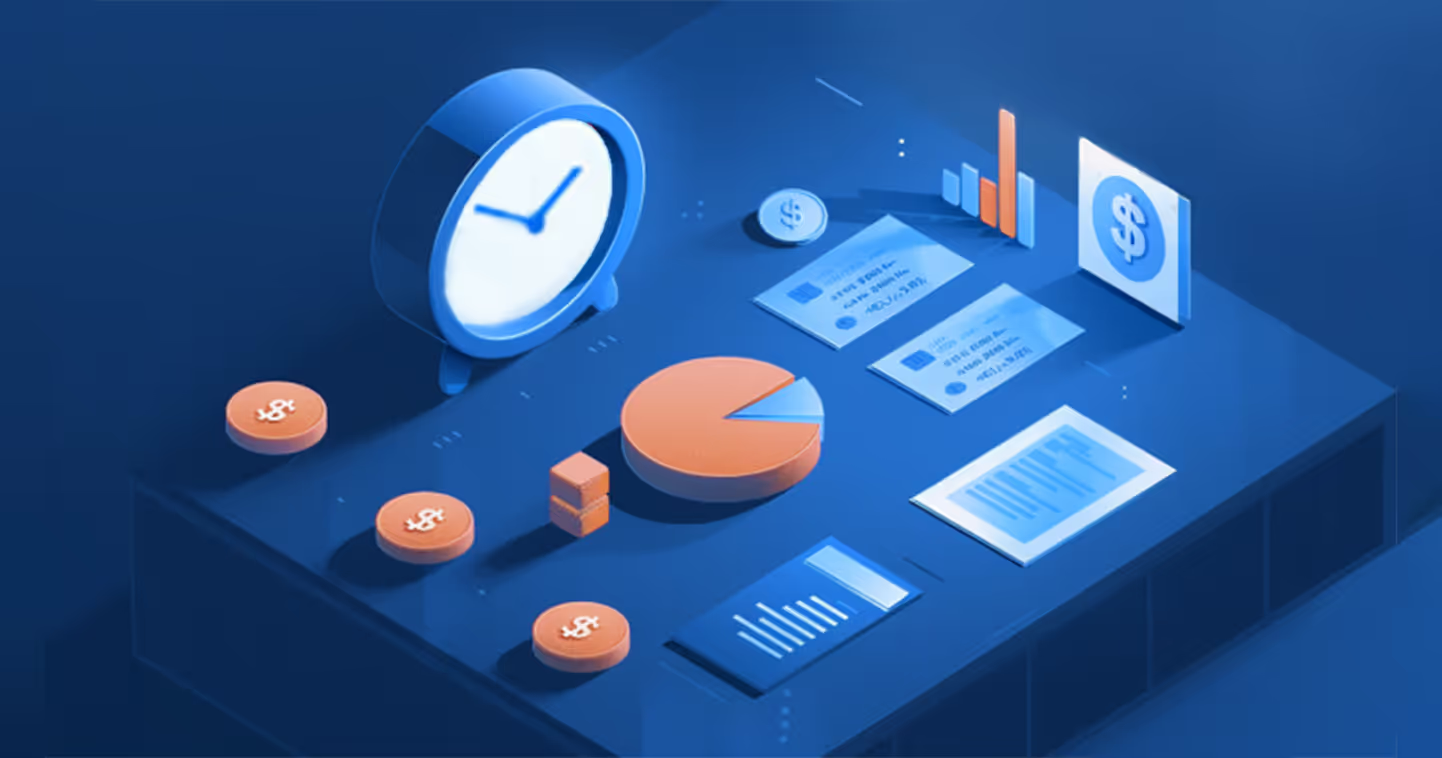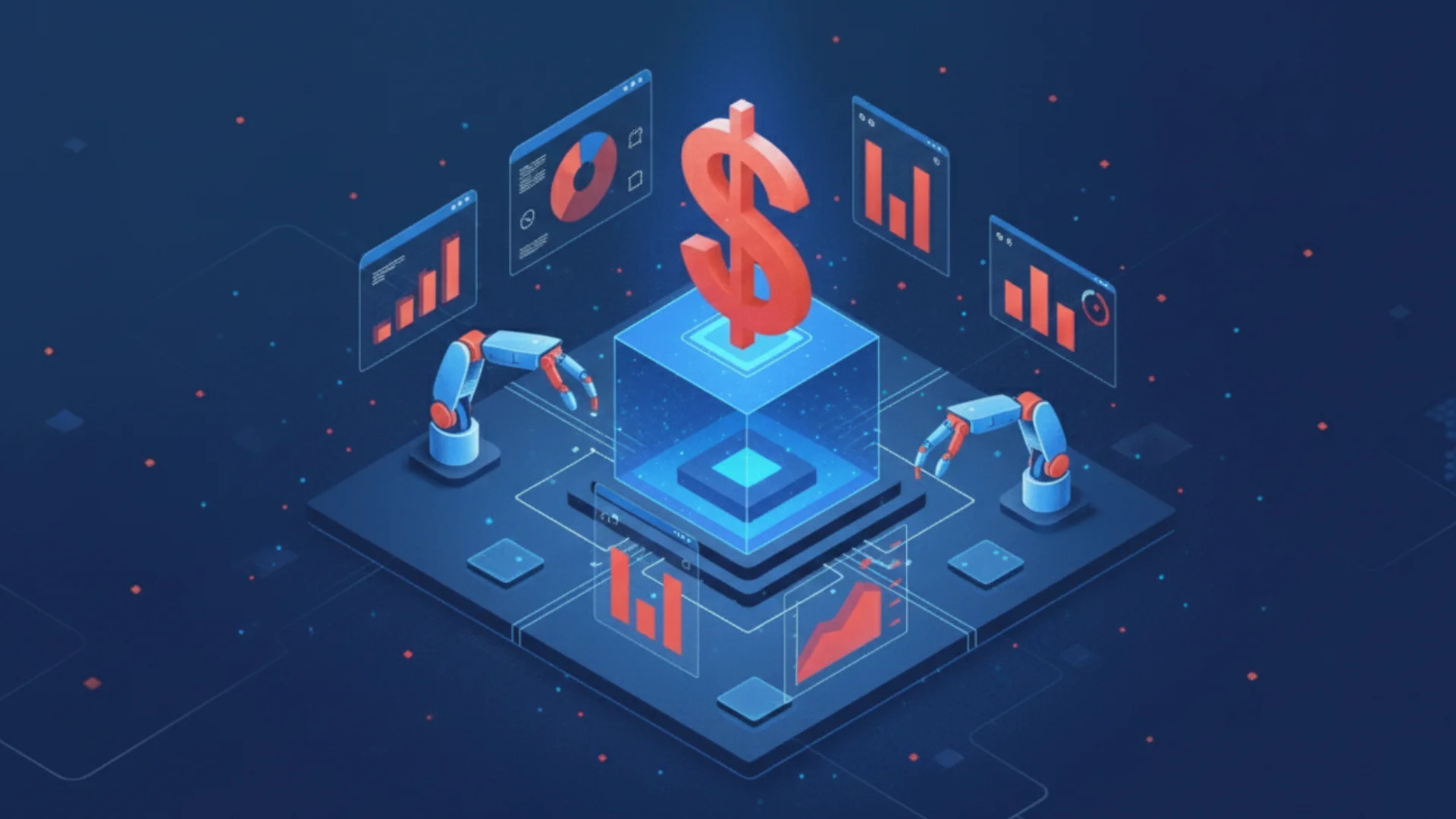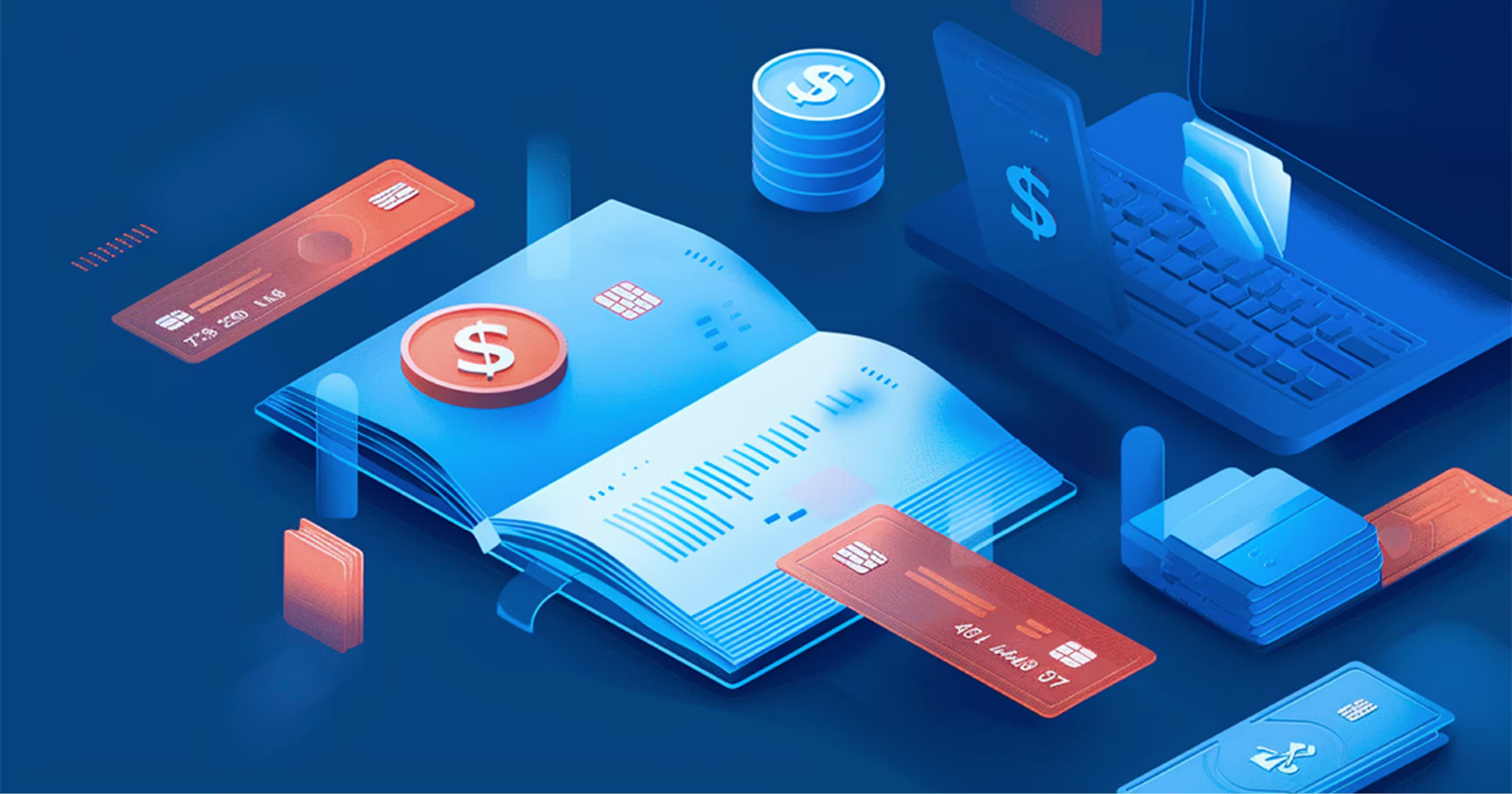Why Agentic AI Is Breaking Your SaaS Pricing Model

Last quarter, a SaaS CFO told me their pricing model broke overnight. The company had run smoothly on per-seat subscriptions, steady, predictable, easy to plan. Then one enterprise customer rolled out 200 AI agents. None of them were seats, but all of them consumed APIs and support. Revenue stayed flat. Costs tripled.
This isn’t just their story. More finance leaders are discovering that agentic AI doesn’t fit old subscription models. Forecasts drift off track. Margins shrink without warning. Month-end close becomes a scramble, patching spreadsheets, chasing down usage data, and explaining misses to the board.
In this guide, we’ll see why founders think agentic SaaS pricing models are breaking, the real risks for SaaS finance teams, and the new pricing frameworks forward-thinking companies are already testing.
What is agentic AI and why traditional SaaS pricing fails?
Most people think of AI as a tool that helps humans, chatbots that answer questions, copilots that write code, or dashboards that summarize data. Agentic AI is different. These aren’t assistants waiting for input. They are autonomous agents that make decisions and trigger workflows.
For example, an AI sales agent can prospect, email, and even negotiate without a human logging in. A support bot can resolve tickets 24/7, escalating only the toughest cases. A compliance agent might monitor thousands of transactions in real time, flagging anomalies automatically.
The business impact? Each agent generates API calls, database queries, and compute usage, all without being tied to a seat. As Andrew Ng says, these systems scale like software, not people. That means a customer could deploy hundreds of agents overnight. They don’t buy more seats, but they do consume significantly more infrastructure.
Agentic AI changes the equation: revenue is still tied to headcount, but costs and value creation are tied to autonomous workloads. That’s where the misalignment begins.
What is the fundamental pricing mismatch?
Traditional SaaS pricing assumes human drive usage.
One person = one seat = one predictable revenue stream. Agentic AI breaks that math.
A single customer may run 10, 100, or even 1,000 agents, each creating variable workloads.
Compute spikes, API costs rise, and support tickets increase, but the SaaS vendor doesn’t see additional revenue under a per-seat model.
In effect, the seat-based subscription model hides the true value delivered by AI agents.
That’s why we’re now seeing SaaS boards and pricing leaders push for AI-ready models, usage-based, value-stream, or hybrid approaches that reflect how autonomous agents actually consume and create value.
How is agentic AI breaking traditional SaaS economics?
1. Unpredictable resource consumption
The scale of AI resource use is staggering. A single AI agent can consume hundreds or even thousands of times more compute or API calls than a human user. One company’s experiment with 200 agents caused infrastructure costs to triple almost immediately, without generating additional revenue.
Patrick Campbell, CEO of ProfitWell, explains: “You can’t just multiply a seat price by the number of agents. Resource use and value are no longer aligned.” For finance teams, this unpredictability makes cost forecasting nearly impossible. Traditional per-seat billing suddenly turns profitable customers into loss-leaders.
2. The seat-based pricing paradox
Old-school per-seat pricing simply doesn’t work with AI workloads. Some customers run heavy agent workloads on low-cost seats, while others pause usage when surprise bills hit. This mismatch creates artificial scarcity and revenue gaps. Reddit discussions among SaaS pricing experts highlight how these static models can be gamed, leaving companies scrambling to fix revenue leaks.
3. Variable value creation patterns
Not all AI agents deliver the same results. In one analytics SaaS, some agents produced dozens of actionable insights daily, while others lagged because of unreliable data or dependencies.
Bessemer Venture Partners’ recent study found that companies now track agent-level performance just to avoid funding low-value workloads. For finance teams, this means consumption and outcomes must be tracked separately, something traditional seat-based models simply can’t handle.
4. Cost structure inversion
AI workloads flip the old cost logic. Cloud and infrastructure costs now grow faster than revenue as agent adoption spreads.The infrastructure costs are increasing four times faster than top-line growth. Without consumption-based pricing, even companies with growing revenue see profitability collapse beneath the surface.
5. Customer behavior shifts
A Bessemer survey found that 73% of enterprise SaaS CFOs demand real-time tracking and billing by agent consumption. Trust, adoption, and retention hinge on giving customers clear visibility into their AI usage and costs. Without it, adoption slows and churn rises.
This isn’t theoretical. Companies like DataRobot and HubSpot are openly discussing how agentic AI is forcing them to rethink legacy pricing. Finance teams are rebuilding cost allocation and forecasting from scratch. Moving to transparent, consumption-based billing isn’t optional, it’s a survival strategy in the age of agentic AI.
Where is agentic AI pricing already breaking?
Agentic AI pricing challenges aren’t future worries, they’re disrupting SaaS business models today. Here are three areas where finance teams are seeing the cracks most clearly with traditional billing.
1. Customer service AI platforms
Customer service AI platforms face agentic AI pricing challenges when autonomous agents handle thousands of interactions daily, making traditional per-agent-seat pricing models unsustainable and unprofitable.
- Reports say that 30% of enterprise accounts turned unprofitable overnight as support agents scaled ticket resolution 25x.
- Finance impact:
- Prepaid expense journal entries for cloud credits failed to reflect usage spikes.
- Monthly prepaid expense amortization understated true support costs.
Seat-based pricing keeps coming up as a pain point on r/SaaS. Many are transitioning to usage-based models to balance costs and margins — something Zenskar is built to support.
2. Marketing automation & content generation
AI copilots now generate campaigns at machine speed - blogs, ads, and social posts. While powerful, this creates huge billing imbalances.
- It is found that 5% of customers consume over 60% of content generation costs, yet paying no more than smaller accounts.
- Finance impact:
- Recording prepaid asset amortization grew complex as high-volume clients burned resources disproportionately.
- Prepaid expense adjusting entries became more frequent, complicating reconciliations.
Vendors shifting to hybrid billing (base fee + per-asset usage) with Zenskar achieved healthier margins and more predictable reporting.
3. Data analytics & business intelligence
In BI platforms, autonomous agents run thousands of queries daily far beyond human analyst workloads.
- At a SaaS conference, a BI vendor revealed compute costs outpacing revenue growth by 40%, creating severe margin pressure.
- Finance impact:
- Teams defaulted to straight-line prepaid amortization, which masked how much heavy users consumed.
- This distorted P&Ls and made profitability reporting unreliable.
By transitioning to transparent usage-based pricing, firms using Zenskar aligned revenue with actual data processing costs.
What are the new pricing models that actually work for agentic AI?
1. Consumption-based pricing frameworks
Consumption-driven billing models align costs with actual AI agent resource usage, providing predictable margins while offering customers transparent pricing that scales with their business value.
For Example: Cloud-based analytics platforms bill per GPU hour, ensuring high-usage customers pay proportionally. With Zenskar, finance teams automate this billing without engineering bottlenecks.
2. Value-outcome pricing models
Value-based pricing frameworks shift the focus from input to results. Customers don’t just pay for compute cycles, they pay for outcomes.
- Marketing AI platforms bill per 1,000 qualified leads.
- Customer service AI charges per ticket resolved or CSAT score improvement.
3. Hybrid pricing architectures
Hybrid pricing models combine the stability of base fees with the scalability of variable charges. This is where most SaaS providers are landing today.
Structures include:
- Base + usage: Monthly license + per API call.
- Tiered consumption: Bundled tiers (10M, 20M, 50M calls).
- Value accelerator: Usage billing plus a % of attributable revenue lift.
These hybrid frameworks drive both predictability for customers and higher ARPU for vendors - 40-60% uplift reported by SaaS leaders. With Zenskar, CFOs can test, deploy, and scale hybrids without custom code.
How to transition your SaaS pricing for the agentic AI era?
Moving into the agentic AI era requires more than swapping billing tools. It's a full pricing transformation journey. The right approach combines structured planning, data-driven testing, and transparent communication. Here’s a roadmap to make the transition smoother.
1. Assessment and planning phase
A successful SaaS pricing strategy evolution begins with comprehensive analysis of current AI agent usage patterns, resource consumption data, and customer value realization metrics to inform new pricing model design.
Key steps to take:
- Audit usage and value: Map where AI agents consume resources (API calls, compute hours, storage).
- Segment customers: Group by workload type, industry, and growth stage—since value perception differs.
- Run model simulations: Test consumption, outcome, or hybrid pricing against historical data.
2. Implementation and customer communication
Once the design is clear, focus shifts to transition execution. Here, change management principles are critical.
Best practices include:
- Pilot before scale: Start with a small set of customers to validate model performance.
- Set a clear timeline: For example, 2-3 months of dual billing (old vs. new) before full migration.
- Communicate openly: Explain why the change is happening, how it benefits customers, and how predictability is preserved.
How to bill for your agentic SaaS with Zenskar?
Zenskar provides an AI-powered, end-to-end platform for businesses to track agentic AI resource consumption and monetize unpredictable AI workloads. By automating the order-to-cash process, Zenskar enables companies to manage complex usage-based pricing models without relying on manual spreadsheets or developer resources.
- Agentic AI resource tracking: The platform meters usage events in near-real-time and at scale, processing up to 50,000 events per second. It can track resource consumption with the granularity needed for AI-based usage, such as tokens, credits, or specific API calls.
- Flexible usage-based charges: Zenskar's no-code builder allows finance and product teams to easily configure and launch complex pricing models. This includes subscriptions, usage-based plans, hybrid models, and bespoke contracts with features like overages, credits, and minimum commitments.
- No-code pricing iterations: Companies can experiment with new pricing strategies in a risk-free, sandbox environment and launch new plans without engineering intervention. This reduces time-to-market and allows for rapid adaptation in competitive AI markets.
Beyond basic billing, Zenskar's AI-powered analytics help businesses make sense of AI usage to optimize revenue.
With us, finance teams can go from rigid subscription billing to AI-driven pricing transformation in weeks not months.

Book a demo or watch our product tour to explore how Zenskar supports agentic SaaS pricing.
Frequently asked questions
Move beyond seat-based models and adopt usage-based or outcome-driven pricing, ensuring costs reflect actual resource consumption. Platforms like Zenskar automate this alignment.
Key metrics include API calls, compute/GPU hours, storage, and outcome KPIs (e.g., leads generated or tickets resolved).
Most enterprises welcome transparency and fairness, especially when billing scales with value delivered.
Best practice: a 3-6 month phased rollout, often starting with dual billing pilots.
By using historical usage data and predictive analytics capabilities Zenskar offers natively.


















%20be%20truly%20invisible_.webp)










